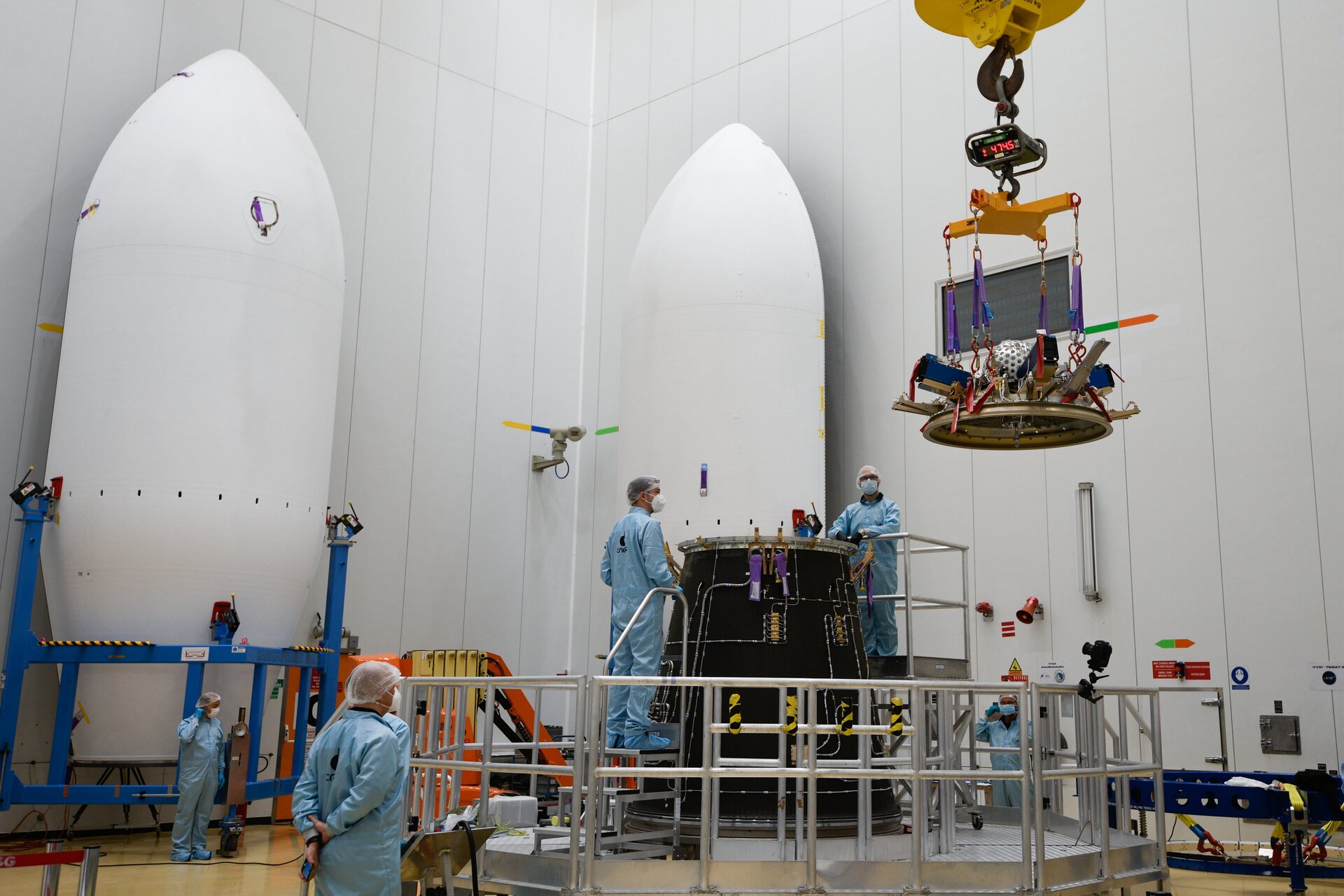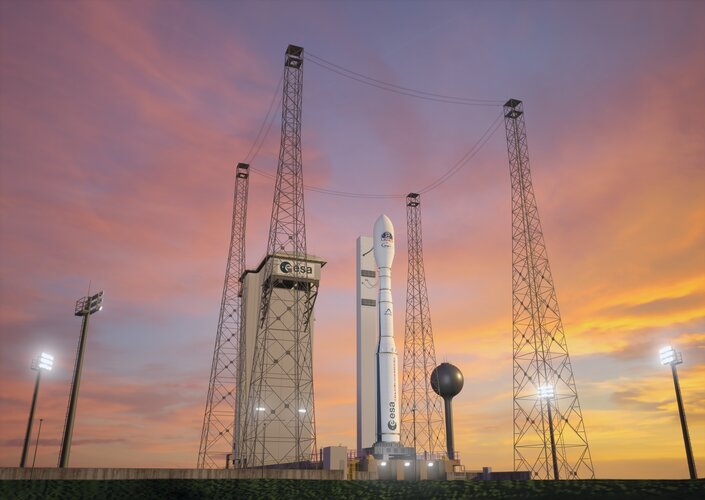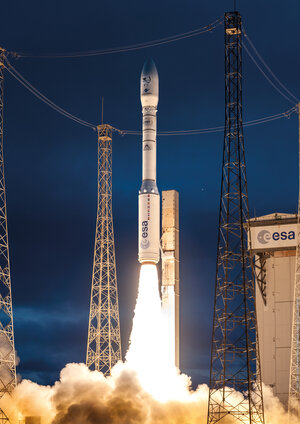Vega-C set for inaugural launch
ESA’s new medium-lift Vega-C rocket is nearly ready for its inaugural flight, with its four stages stacked and ready to receive the payload fairing before final checks and launch from Europe’s Spaceport in French Guiana.
Flight VV21 will lift off as soon as 13 July, pending suitable conditions for launch. For more about Vega-C and VV21, download the VV21 media kit.
Vega-C represents a dramatic capability boost compared to its predecessor, Vega, which has flown since 2012. With new first and second stages and an uprated fourth stage, Vega-C increases performance from Vega’s 1.5 t to about 2.3 t in a reference 700 km polar orbit.
Vega-C features a new, more powerful first stage, P120C, based on Vega’s P80. Atop that is a new second stage, Zefiro-40, and then the same Zefiro-9 third stage as used on Vega.
The re-ignitable upper stage is also improved. AVUM+ has increased liquid propellant capacity, to deliver payloads to multiple orbits depending on mission requirements and to allow for longer operational time in space, to enable extended missions.
The P120C motor will do double service, with either two or four units acting as strap-on boosters for Ariane 6. Sharing this component streamlines industrial efficiency and improves cost-effectiveness of both launchers.
With its larger main stages and bigger fairing – which doubles the payload volume compared to Vega – Vega-C measures 34.8 m high, nearly 5 m taller than Vega.
The new launcher configuration delivers a significant improvement in launch system flexibility. Vega-C can orbit larger satellites, two main payloads or can accommodate various arrangements for rideshare missions. ESA’s upcoming Space Rider return-to-Earth vehicle will be launched to orbit on Vega-C.


Access the video
RELATIVITY PAYLOAD
The main payload on this inaugural flight is LARES-2, a scientific mission of the Italian Space Agency (ASI). Once in orbit, LARES-2’s precise path will be tracked by laser, from ground stations. The purpose of the mission is to measure the so-called frame-dragging effect, a distortion of space-time caused by the rotation of a massive body such as Earth as predicted by Einstein’s General Theory of Relativity. Its predecessor, the similar LARES, was the main payload on the 2012 inaugural flight of Vega.
Six CubeSats make a secondary payload package. AstroBio CubeSat (Italy) will test a solution for detecting biomolecules in space. Greencube (Italy) carries an experiment to grow plants in microgravity. ALPHA (Italy) aims to help understand phenomena related to Earth’s magnetosphere, such as the Northern and Southern Lights.
Three other CubeSats – Trisat-R (Slovenia), MTCube-2 (France) and Celesta (France) will study the effects of a harsh radiation environment on electronic systems.
CHALLENGING MISSION
As with any inaugural launch, this is a challenging mission. “Vega-C features major enhancements from Vega, both in the rocket and its ground infrastructure,” says Renato Lafranconi, Vega programmes manager. “We’ve developed a new configuration with significant changes to many features of a proven concept, but the goal is to deliver major improvements in performance and competitiveness.”
ESA’s Director of Space Transportation, Daniel Neuenschwander stresses that Vega-C will work alongside the Ariane 6 heavy lifter to ensure Europe maintains flexible, competitive – and, critically, autonomous – launch capabilities: “With Vega-C and Ariane 6, Europe will have a flexible, independent solution for a fast-changing launch market.
“And, these two systems are the foundation of a development plan that will serve European institutions and commercial partners, opening a new chapter of European services.”
ESA Member States participating in Vega-C are Austria, Belgium, the Czech Republic, France, Germany, Ireland, Italy, the Netherlands, Norway, Romania, Spain, Sweden and Switzerland.















